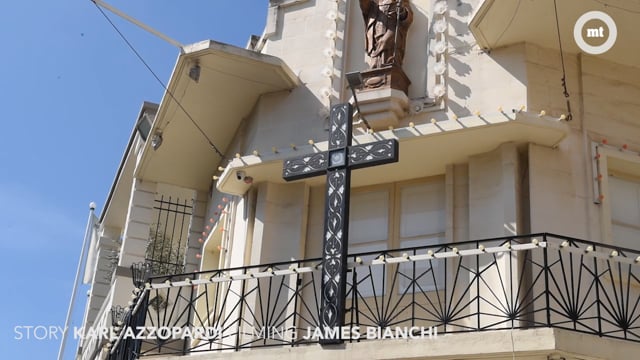[WATCH] Good Friday pageantry: Why religion has to be seen, heard and felt
We visited Żebbuġ to find out how people commemorate Good Friday with exhibitions and pageantry


Catholic traditions are a staple of Maltese culture, but Holy Week marks one of the most celebrated occasions of the year.
Good Friday in Malta and in other Catholic communities around the world, marks the end of the 40-day period of lent leading up to Easter Sunday.
With the tradition dating back to medieval times, the day is marked by crowds of Christian devotees flooding to village squares around Malta and Gozo, to experience the Good Friday processions.
The pageants feature a cast of men, women and children dressed up as biblical characters, preceded by band players leading the way, setting the gloomy mood with their funeral music.
The processions also include a set of statues which depict the passion of Jesus Christ.
Each statue is carried by six to eight men.
MaltaToday took to Haz-Zebbug, a village whose procession is known across the islands for its extravagance and diversity of biblical characters.
Paul Azzopardi, one of the procession organisers, said that the Zebbug procession features a total of around 840 people dressed up as Roman soldiers, biblical figures and statue bearers, while also being one of the few to include horses.
Andre Seguna, who is also part of the procession organisation, said that to successfully coordinate the pageant, yearlong commitment is required.
“Work for the procession is divided into three. The first part is the planning of the procession, where we decide what will be done to improve on the previous year,” Seguna said.

The second stage of the process, according to Seguna, is maintenance of equipment and costumes that may have suffered damage during the previous year.
“The third stage is the heavy-duty work, where we start unpacking and sorting out the costumes before we disseminate them to the people who will be participating in the procession. We also start taking out the statues and placing them around the church, which requires some heavy lifting,” Seguna said.
When the procession is over, volunteers return the costumes and props to the organisers, who then store them for the next year.
The Holy Week is also marked by a variety of cultural practices such as the setting up of model scale representations of the last supper, which are open for the public to see.
Traditional exhibits include plates of coloured rice, yeast or salt, which aredelicately spread out and placed, to form a biblical representation.

Geneanne Coleiro, who is in charge of the exhibition presented by the 12th May Band Club in Zebbug, explained the rigorous work needed to make these traditional plates.
“The work requires precision and patience, and one plate normally takes around 6 hours to be completed,” she said.
The different hues of colour are achieved by the first dyeing the rice, salt or yeast that would be used, with the artist than starting the slow process of creating the representation on the plate.
The St Philip Band Club, also features a set of small scale replica statues on display for the public to enjoy.
At Christmas thinking of Good Friday
Jonathan Agius, who owns these statues, said that work for the Holy Week exhibition starts from December, and the planning process takes weeks for the final product to be displayed to the public.
“I once met a priest who told me, that people from Zebbug are so obsessed about Good Friday, that they think about it during Christmas,” Agius said.
When Zebbug residents were asked what significance, the feast holds to them, some said that it creates a communal feeling and keeps the community intertwined.

“The organisation and work behind the procession helps the community to remain active and connected,” one resident said.
Another resident said that he felt that the spiritual meaning behind the procession has been lost.
“Come here on Friday and look at people drinking beer and eating food, on what is supposed to be a day of mourning. It has become a carnival,” he said.
The Zebbug Good Friday procession similarly to other processions around the country, starts at 5.30 pm, and is preceded by the soldier parade at 4.30 pm.






.jpg)













.png)

